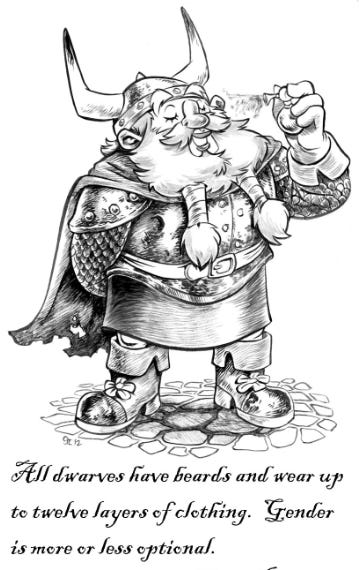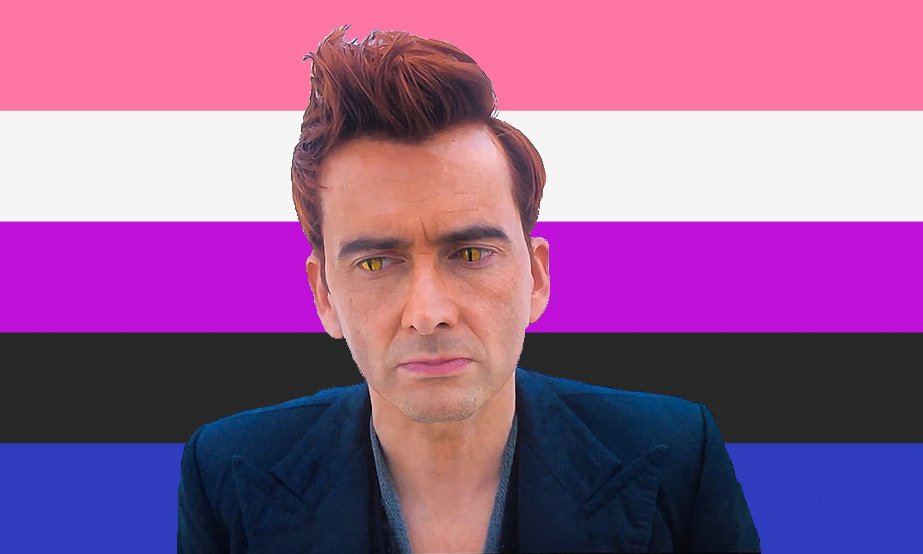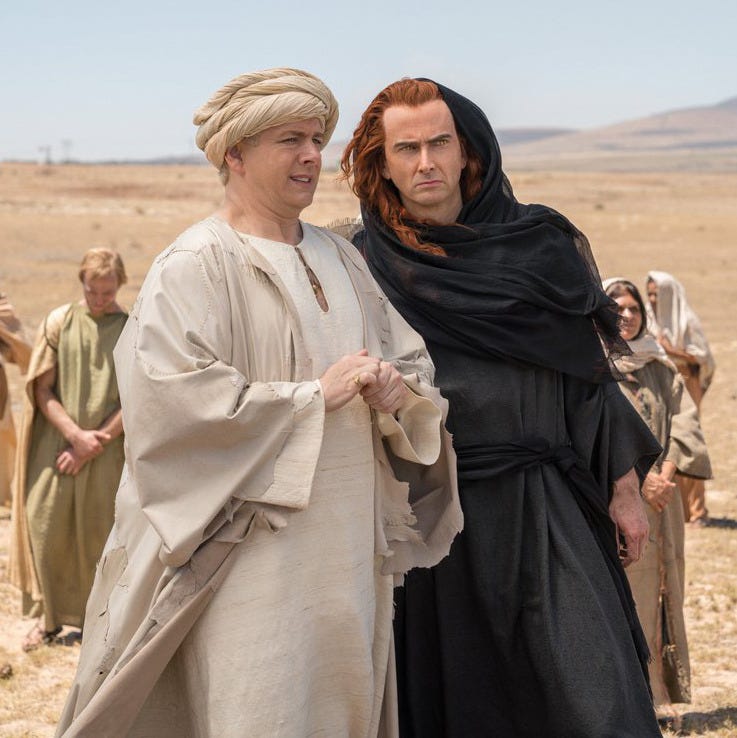I’m back! Sorry for the protracted disappearance: I had some health issues that sent me to the ER during July. I’m finally feeling better, so I wanted to get back to my weekly posts!
This past weekend, Amazon Prime dropped my most-anticipated television show of 2023: Good Omens, season two. I immediately dropped everything to watch it not once, not twice, but four times.
I cannot overstate how much I have been looking forward to this. Published in 1990, Good Omens: The Nice and Accurate Prophesies of Agnes Nutter, Witch is a novel co-written by Neil Gaiman and the late Terry Pratchett. It’s one of my favorite books of all time. The first season of the show adapted the novel for television in 2019, over the course of six hour-long episodes. Like the novel, it quickly became a particular favorite of mine; I’ve probably watched it all the way through upward of 50 times.
A second season was never guaranteed. After Terry Pratchett’s death in 2015, Neil Gaiman expressed an understandable hesitance to continue the story without him. Luckily for the fans, he eventually decided to proceed with a second season, this time adapting the unpublished sequel to the original novel. It was an exciting announcement, because though the first season made some changes and updates to the novel’s story, this new season was going to give us brand-new material that we had never seen before.
Now, as the new season has only been out for five days, I have no intention of sharing major spoilers. Instead, I would like to focus on the show’s handling of gender.
Good Omens has always played with gender in interesting ways, which I talked about in my piece on trans characters in media, if you want to check that out.
In the book, this gender play manifested predominately with the angels and their demonic counterparts. These characters were described as “sexless unless they really make an effort” and though the two main characters, Aziraphale and Crowley, presented as male, it was made clear that they didn’t have genders by typical human standards. Considering Gaiman and Pratchett have both long been allies of the LGBT+ community, this isn’t terribly surprising, nor is it the only time transgender characters have appeared in their works.


But perhaps the most interesting thing to me about gender in Good Omens specifically, is how Gaiman expanded upon it when adapting the novel for television. More characters were made explicitly gender-neutral, non-binary, or genderfluid, and yet, it never seems to interfere with the plot. While I think there’s still plenty of room for coming-out stories and more educational approaches to transgender and non-binary characters, it’s extremely refreshing to have them simply exist as part of the narrative. To see these characters moving through their lives without any questioning of who they are normalizes our identities in a way that all the after-school-specials in the world cannot.
Season one of Good Omens already did a lovely job with this. We had multiple characters who use they/them pronouns throughout the show: Pollution, Beelzebub, Michael, and Uriel. But the highlight of season one’s gender-fuckery came from my favorite character, Crowley.
Crowley is a demon who isn’t very good at doing evil, and who has struck up a 6000 year-long friendship with the angel Aziraphale. Throughout most of the first season, Crowley presents as male, but there are two exceptions. The more obvious of the two is when he and Aziraphale decide to oversee the childhood of the Antichrist in an attempt to stop him from bringing about Armageddon. While Aziraphale takes on the role of the family gardener, Crowley becomes Nanny Ashtoreth, raising young Warlock for several years.
The best thing about the scenes with Nanny Ashtoreth is that, though they are extremely funny, the fact that actor David Tennant is dressed as a woman is never played for laughs. Crowley’s genderfluidity is just another facet of their character.
The second time we see Crowley presenting as a woman in season one is during the infamous 30-minute flashback sequence at the beginning of episode three, which shows several meetings between Aziraphale and Crowley throughout history. They meet at Golgotha in 33 AD to witness the crucifixion of Christ and, again, Crowley is a woman.
This second instance is more interesting to me because it’s entirely subtextual. On my first watch, I immediately noticed that Crowley’s clothing was more in line with the clothes worn by Mary, Martha, and the other mourning women, but it wasn’t until Gaiman confirmed on Twitter that, yes, Crowley was a woman in that scene, that I knew for sure. While I feel like this subtly wouldn’t work as well for me in another show, Good Omens had already demonstrated its dedication to gender-consciousness within the story. This, I think, is the key to writing characters outside the gender binary; there is value in both explicit and implicit portrayals, but implicit portrayals don’t mean very much if you aren’t also willing to have more direct ones.
This thoughtful approach to gender continues in the second season.
In season two, we get even more gender-neutral characters. Two new angels are brought in: Muriel and Saraquael, who both use they/them pronouns. One of the Aziraphale’s fellow shopkeepers is celebrating his anniversary with his spouse, who we later briefly meet in episode 5, played by non-binary actor Andrew O’Neill.
And of course, there’s Crowley. While we unfortunately don’t get to see a female Crowley in season two, we do get this lovely little gem:
I literally squealed the first time I saw it. This scene is so lovely and simple. It reinforces Crowley’s dislike of being called “good,” while also emphasizing that he also doesn’t think of himself as a man, and that he cares about it enough to correct a human he barely knows. It’s also a fun callback to one of the best ad-libs ever:
It’s doesn’t hurt that David Tennant himself has a non-binary child and has been a very outspoken ally to the trans community over the last few years. I feel like this gives these lines coming from his character some extra weight, since he’s seen firsthand, the experiences of a non-binary individual in his own family.
At any rate, these normalized depictions of trans characters mean so much to me and other trans and non-binary folks. This is how it ought to be done. They’re genuine and don’t sit you down for a long talk about pronouns, but they still show you that we’re not all that different from cis people. I hope we get a third season, and I can’t wait to see what the cast and crew bring to the table for us in the next go-round. Representation is so important, and I firmly believe that Good Omens is doing an excellent job of it.
Good Omens is streaming on Amazon Prime Video.











